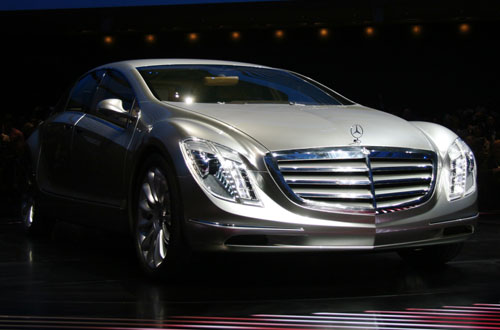|
|||
 |
|---|
Facts About Germany German History German Recipes |
History of Mercedes-Benz
Mercedes-Benz has long been known for crafting vehicles that emphasize luxury and refinement. For many, its vehicles are sleek symbols of status, success and achievement. The founders of the company – Gottlieb Daimler and Carl Benz were born in southern Germany. Daimler was born March 17, 1834, Carl Benz - on November 25, 1834. Since childhood they were fascinated by machines. But they have absolutely different approach to building cars. In 1844 Carl Benz constructed a three-wheel motor car. This single cylinder, 3/4 hp, benzene fueled motor car had a combination of belts, chains and gears to transmit power to the rubber tired rear wheels but no gear change was possible. In 1886, Carl Benz built a motorized tricycle. His first four-wheeler, the Victoria, was built in 1893. The first production car - Benz Velo (1894) participated in the first recorded car race, the Paris-Rouen race. In 1895, Benz built his first truck. Daimler's first four-wheeler, a Victoria-type motor driven carriage, was built in 1866.
It is known, that Daimler, generally considered to be the father of modern automobiles never liked to drive. In 1890 Daimler Motor Company (the Daimler Motoren Gesellschaft) was created. Benz, with several associates formed another corporation, Benz & Company, at Mannheim. The 1903 Parsifil was Benz's answer to Mercedes. A two cylinder vertical engine produced a top speed of 37 mph in this car. At the beginning of the First World War, both factories were converted into production sites for war material. In 1924 Benz and DMG signed an "Agreement of Mutual Interest." It was connected with economic necessity, Although both companies retained their identities. The two companies merged with relative ease on June 28, 1926. A symbol was chosen for the combined products of DMG and Benz. The new insignia was a three-pointed star wreathed with laurel; the star was dreamed up by Daimler years earlier, and its three points signified the fact that his engines were for use in vehicles that traveled land, air and sea. The word "Mercedes" was at the top and the word "Benz" was at the bottom. Mercedes-Benz launched their biggest and most prestigious car to date in 1930. The 770 Grosser was powered by an 8 cylinder, 7.6 liter engine. The cars of the 1930s produced great racing success for Mercedes-Benz. The silver metal bodywork gave rise to the name Silver Arrows. The 1930s and 1940s – the period of Mercedes establishing itself as the brand of choice for car buyers seeking the ultimate in luxury, thanks to coveted cruisers like the 380 and 540K. The 1950s - the introduction of the Mercedes-Benz 300 SL "Gullwing," a sports car that has been described as being the world's first super car. The company's Mercedes-Benz 220 sedans were the first vehicles to incorporate its patented "crumple zone" body design, created to absorb impact in the event of a crash. In 1963, the Mercedes-Benz 600 appeared. The Mercedes-Benz 300 SEL 6.3 was also created; it went from zero to 60 in under seven seconds, distinguishing itself as the quickest luxury car is its day. The 1970s - the birth of the brand's storied S-Class line of vehicles, opulent sedans and coupes that coddled passengers with powerful engines and a long list of luxury features. In the 1980s – the company was the first to offer airbags and traction control. The manufacturer also raised the bar in terms of ride comfort and handling when it introduced multilink rear suspension. The technology debuted on the compact Mercedes-Benz 190 E. In the 1990s, a performance and tuning shop that was eventually purchased by the company to help produce high-performance versions of some of its vehicles, thanks to the manufacturer's partnership with AMG. The first AMG model offered in the U.S. was the sporty C36 AMG in 1995. Models: 1989 – 2001- R129 SL Company’s philosophy in quotations: Only actions give life strength; only moderation gives it charm. An idle brain is the devil's workshop. Work is the true elixir of life. The busiest man is the happiest man. Never believe that you are perfect. When a man imagines, even after years of striving, that he has attained perfection, his decline begins The great composer does not set to work because he is inspired, but becomes inspired because he is working. If we are ever to enjoy life, now is the time-not tomorrow, nor next year, nor in some future life after we have died. The best preparation for a better life next year is a full, complete, harmonious, joyous life this year. Today should always be our most wonderful day. A man who dares to waste one hour of life has not discovered the value of life. --Darwin There is no fate that plans men's lives. Whatever comes to us, good or bad, is usually the result of our own action or lack of it. No age or time of life, no position or circumstance, has a monopoly on success. Any age is the right age to start doing! -Gerard No thoroughly occupied man was ever yet very miserable. Undertake something that is difficult; it will do you good. Unless you try to do something beyond what you have already mastered, you will never grow. Many people take no care of their money till they come nearly to an end of it, and others do just the same with their time. –Goethe Related articles:
|
|
Powered by Website design company Alex-Designs.com


